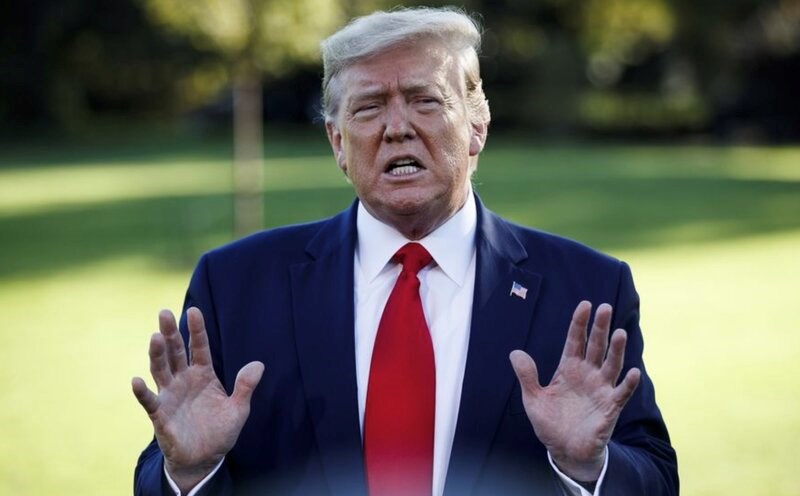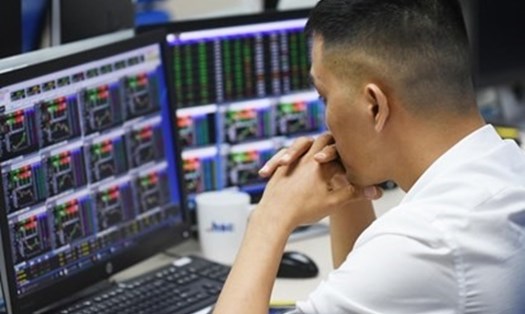At the end of the session on May 4, the Dow Jones index increased by 932.27 points, or 2.81%, to 34,061.06 points. The S&P 500 index gained 2.99% to 4,30017 points. The Nasdaq composite index increased by 3.19% to 12,964.86 points. This is the strongest increase since 2020 for both Dow Jones and S&P 500.
The US Federal Reserve (Fed) has announced an increase in the standard interest rate by 50 basis points, equivalent to 0.5 percentage points. At the same time, the Fed will start narrowing the scale of the accounting balance sheet in June. This is the biggest interest rate hike since 2000 for the Fed, but investors have been waiting for this move for a long time.
Fed Chairman Jerome Powell said: A 75 basis point increase is not something the Commission is actively considering. I think it is expected that we will start seeing inflation moving sideways.
According to him, the Fed can curb economic growth without causing the unemployment rate to skyrocket due to high recruitment positions and stable household finances.
In opposite directions, Asian stocks plummeted, except for Shanghai Com, which increased by 2.43%. European stock indexes are also sinking into red.
The yield on the 10-year US government bond surpassed 3% again on May 4, approaching its highest level since 2018, but fell to 2.93% after Mr. Powell's decision.
The USD fell to its lowest level in a week. The USD Index (DXY) measuring the fluctuations of the greenback against 6 major currencies decreased sharply by 0.92%, reaching 102.51.
As of 8:00 a.m. this morning, the world gold price was listed at 1,895.30 USD/ounce, a sharp increase of 25.3 USD/ounce compared to the closing price of the previous session.
At the same time, according to tradingeconimics, WTI crude oil prices traded well, increasing by 0.73% to 108.57 USD/barrel. Brent oil price increased by 0.84% to 111.07 USD/barrel.
Green covers the cryptocurrency market with Bitcoin and Ethereum prices rising sharply by 4.66% and 5.3%.
At the end of the first session of May, the VN-Index fell sharply by 18.12 points, or 1.33% to 1,348.68 points. Liquidity in the whole market was sluggish compared to the previous session when it was only around VND16,811 billion. Smart cash flow has not shown any signs of returning, the risk of decline in the short term is quite high.
Foreign investors in the trading session on September 4.5 were quite gloomy. They focus on net selling VND924 billion, mainly in K humanities, DGC and VHC. They bought back VND619 billion, mostly in NLG, HPG and BCG codes.
According to the East Asia Securities Commission (DAS), the VN-Index is negatively affected by the world stock market, which is concerned about the US dollar interest rate increase possibility of happening faster than expected, and the impact of inflation could erode corporate profits.
In addition, the sharp decrease in liquidity is a not-so-positive sign that investors may withdraw from speculative stocks as well as reduce the general trading frequency. The market may be quite cautious in the next trading sessions as they are waiting for news about interest rates on stock valuations.
KB Vietnam Joint Stock Company (KBSV) recommends that investors continue to maintain positions opened in previous sessions, avoid chasing and may increase a part of the proportion if the index returns to the support zone of 1,320 (+/-10).
The market is following the W-bottleneck formation scenario. Tan Viet Securities (TVSI) believes that the upcoming sessions of decreases from 5.5 will continue to be a good opportunity to select buying stocks for medium and long-term goals. Short-term investors should take advantage of the short-term "uncertainty" of market sentiment to restructure their portfolios and maintain a balanced state.
Yuanta Securities recommends that short-term investors continue to stay on the sidelines and observe the market. At the same time, if investors accept high risks, they can consider disbursing at a low ratio in stocks that have confirmed buying points with high growth points.








